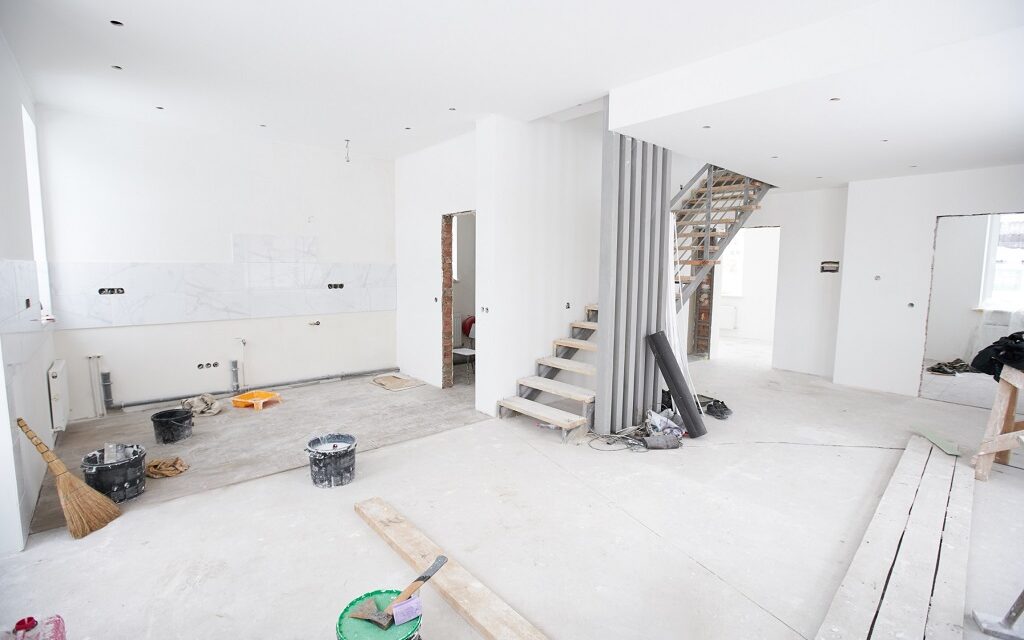Remodeling your home is an exciting experience. Whether undertaking a remodel out of necessity or choice, the process represents inspiring possibilities: the opportunity of turning your home into your dream home; converting a wasted space into a beloved room; or transforming an outdated abode into an on-trend contemporary home.
However, remodeling can also be quite stressful, especially if you plan to live in the house during the project. Fortunately, some tips and tricks can help make living in your home during a remodel easier.
Once you’ve done the budgeting for a home remodel and selecting a general contractor, here are a few expert tips for living in your home while the work is being done.
5 Tips on How to Live in Your Home During a Home Remodel
- Be Flexible
- Stay Organized
- Decide What You Can & Can’t Live Without
- Be Proactive Against Dust
- Use Your Outdoor Spaces
Also see:
1. Be Flexible
One of the most important things to remember when living in your home while it’s being remodeled is to be flexible. Remodels don’t always go according to plan and unexpected delays often occur. It’s helpful to keep an open mind and be prepared to handle and adapt to both small and substantial changes.

One of the biggest struggles for homeowners during a remodel is the inability to maintain the level of cleanliness to which they’re accustomed. The best way to cope with this is to adjust your expectations for the duration of the project, but this is easier said than done.
If your home’s layout and remodel plans allow for maintaining a living space that’s separated from the work zone, you’ll be able to mitigate the mess to some extent. However, the clutter and disarray that comes with construction work are insidious. Despite your best efforts, you’ll most likely have to compromise on your home’s cleanliness during a remodel.
Another challenge is making sure that you are able to maintain a minimal level of functionality and access to parts of your home that adequately addresses your daily lifestyle needs. Identifying areas of “sacrifice” upfront can make the remodeling process easier to manage.
2. Stay Organized
Life doesn’t stop for a remodel. You’ll still need to tackle everyday tasks and keep up with your regular life. A great way to stay organized is to designate areas in the house that are untouched by the remodel and use them as zones for managing daily life. Depending on your home and the work you’ll be doing on it, that “regular home life zone” could turn out to be just one or two rooms and a half-finished bathroom.
Staying organized with the actual work that’s being done on your home is crucial, too. Have a plan for where everything will go and ensure that everyone involved in the project is aware of it. Keep detailed records of each remodel step, ensuring that “promised” (AKA contracted in writing) work is completed and schedules are met when possible.
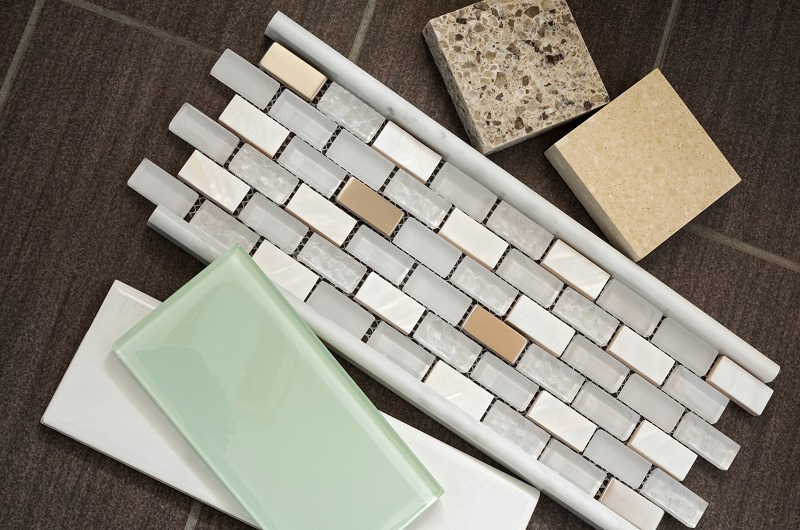
Never assume everything is going as planned, so be sure to take a proactive approach by asking questions and receiving confirmation in writing for anything that may need clarification. A daily check-in on progress will help prevent project delays, as any issues or possible oversights can be addressed in a timely fashion.
3. Decide What You Can & Can’t Live Without
For some people, losing access to the kitchen is a deal-breaker. For others, the notion of living without their family room for a week or longer is incomprehensible. As you plan a remodel, list what you can and can’t live without. This will help inform the scope, sequence of tasks, and time frame of the remodel.
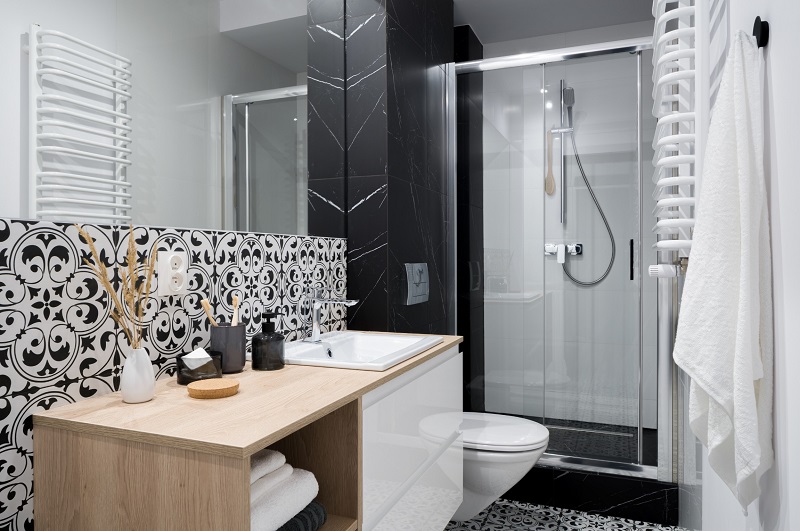
Be realistic when detailing your necessities. If you need to, break your list down into two categories: critical and not-so-critical items. For example, having a functional bathroom is vital to daily living, whereas having access to your patio might not be. This will help you prioritize what needs to be tackled first and provide more insight into how long the remodel is expected to take.
When remodeling a kitchen, consider the summer months for the project. It is easier to prepare meals on an outdoor grill and wash dishes using an outdoor sink and garden hose in the late Spring and Summer than in the Fall and Winter months.
4. Be Proactive Against Dust
Dust, clutter, and general disarray are unavoidable during a remodel, no matter the size or scope of the project. If you’ve researched the pros and cons of different flooring materials, for example, you’ve likely read or heard about the mess that comes with installing new floors.
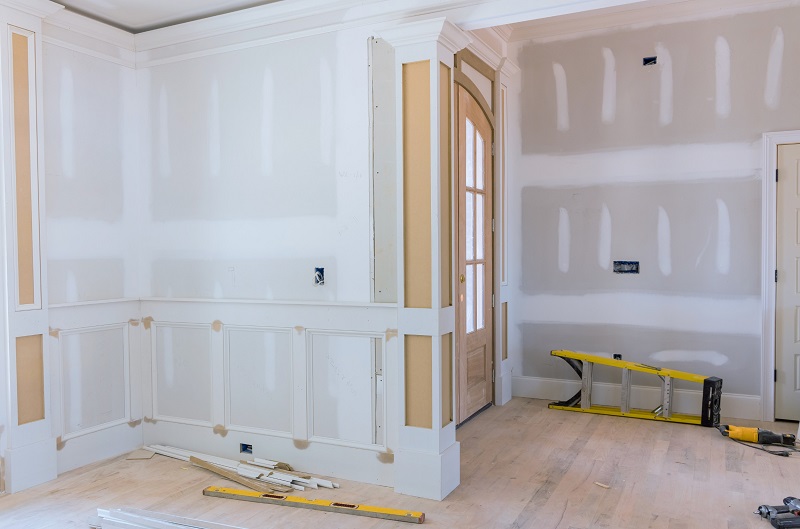
Keeping your house perfectly organized and clean is unrealistic, no matter how hard you try. You can, however, help stem the tide of dust and dirt by regularly vacuuming and wiping down surfaces.
For most remodeling projects, you will also want to use a temporary barrier (e.g. ZipWall Zipper Dust Barriers) to help mitigate the amount of dust that travels throughout your home. Most reputable contractors will cordon off work areas with products of this kind. However, make sure that they keep these temporary barriers properly installed and closed throughout the project!
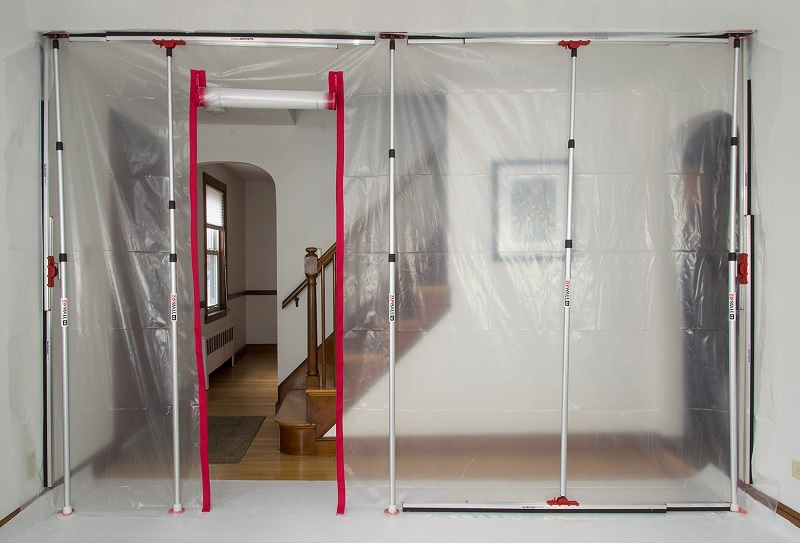
Image courtesy of ZipWall.
Being cognizant of airflow is also important. You can completely seal off the doorways and windows of the area under construction, but once you turn the air conditioning on, all of the airborne mess will be cycled throughout the entire house.
If feasible, we recommend turning off all air ventilation systems, as construction projects can overwhelm your HVAC and re-circulate dust and construction debris throughout your home. Consider covering vents during the project for extra protection, as well.
If you must run your central air system, be sure to keep the air filters in all your vents clean. This will ensure that dander and particles don’t spread throughout your home as easily as they would otherwise.
At the end of each construction day, the crew should be responsible for “shop vacuuming” the project site before they leave for the day. This serves two purposes:
- It helps mitigate poor indoor air quality
- It allows you to view and photograph your project’s daily progress unhindered.

5. Use Your Outdoor Spaces
Whenever possible, making use of your home’s yard, garage, and driveway will pay off during a remodel. This will provide you with an alternative living space and combat the feeling of being cooped up.
Utilizing your home’s outdoor space is especially helpful when the weather is nice, as it allows you to step away from the mess and gives you a much-needed break. Planning a remodel for warmer months can go a long way in maximizing your use of the outdoors.
For example, consider choosing the summer months when remodeling a kitchen. It is easier to prepare meals on an outdoor grill and wash dishes using an outdoor sink and garden hose in the late Spring and Summer, than in the Fall and Winter months.
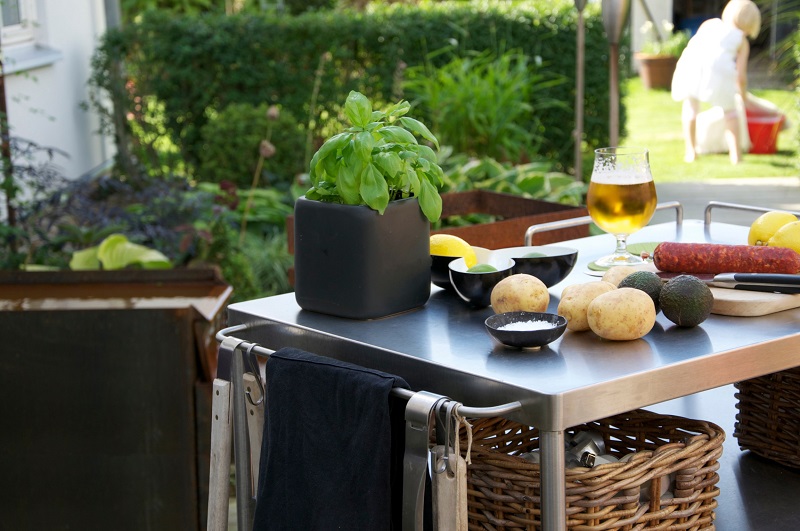
Eating outdoors during conducive times of the year is also a helpful option to have, especially if dining areas become restrictive or air quality is bothersome.
Closing Comments
Living in your home during a remodel is an experience that requires patience, flexibility, and organization. By understanding what you can and cannot live without, staying organized, and using the outdoors, you can make the experience more bearable. With a few smart strategies, you’ll be able to come out of the remodel relatively unscathed and excited about your beautiful new space!
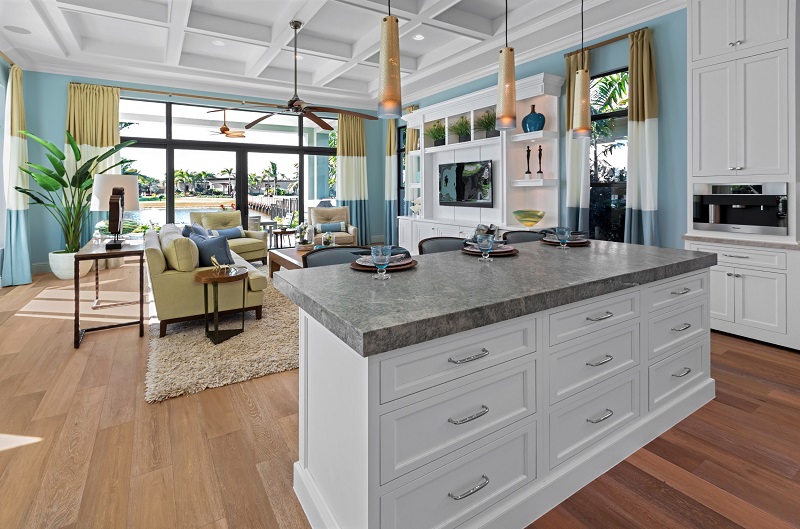
Recommended Reading
- Best Try Before You Buy Experiential Retail Programs for the Home
- How to Make Your Home Entrances & Deliveries Safe With Technology
- Why You Should Never Lend Your Ladder to Your Contractor
- How to Plan & Manage a Renovation Successfully
- How to Choose a Qualified & Trustworthy Contractor
- Unforeseen Circumstances: Planning for Post-Demolition Surprises
- Need Renovation Inspiration? Try These Innovative Design Resources!
- How to Increase Your Chances of Hiring a Good Contractor
| Purgula is reader-supported. When you click on links to other sites from our website, we may earn affiliate commissions, at no cost to you. If you find our content to be helpful, this is an easy way for you to support our mission. Thanks! Learn more. |

